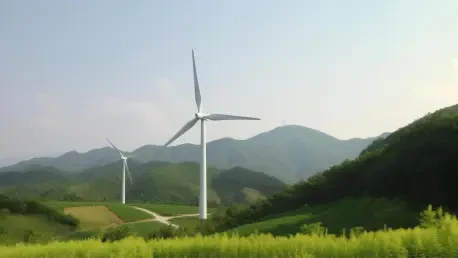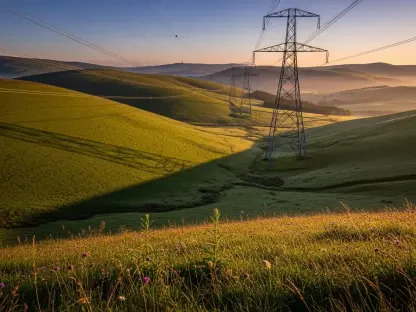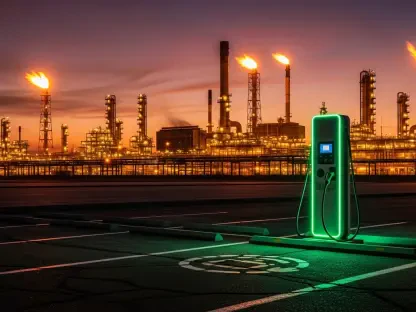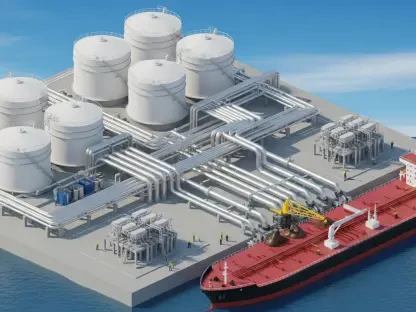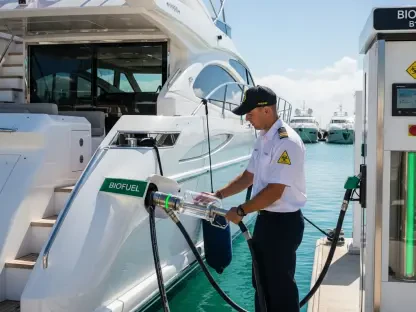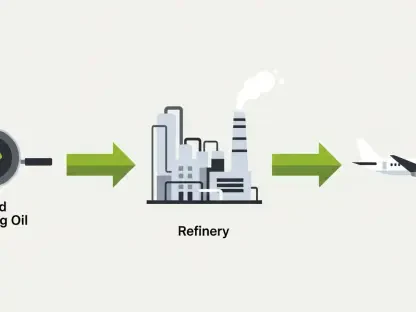In today’s exploration of renewable energy in South Africa, we’re joined by Christopher Hailstone, a renowned expert in energy management and utilities. As South Africa makes strides toward expanding its electricity delivery through renewable sources, particularly wind energy, we’ll delve into the challenges and opportunities this presents for the nation’s grid infrastructure.
Can you explain the current momentum behind wind energy in South Africa?
Interest in wind energy in South Africa has been catalyzed by a mix of recent policy reforms and heightened demand from the private sector. These dynamics have created fertile ground for new investments, leading to significant projects that aim to bolster renewable energy capacity within the country. The momentum is partly because these reforms have made it easier and more viable for private entities to develop wind projects, thereby increasing the potential capacity of wind energy in South Africa’s overall energy mix.
What role do recent policy reforms play in driving the growth of wind energy?
Recent policy reforms have loosened restrictions and provided incentives for private investments, which have been crucial in driving the growth of wind energy. These changes have created a more favorable environment for developers to engage in large-scale projects. As a result, they attract significant private capital, making wind projects not only viable but also highly attractive as long-term investments. The reforms ultimately aim to diversify and stabilize the energy supply by encouraging renewable sources like wind.
How does private sector demand influence the development of wind energy projects?
The private sector’s engagement is transformative, as its demand for cleaner energy sources drives the development of significant wind projects. Corporates are actively seeking to partner with Independent Power Producers (IPPs) to meet their sustainable energy needs, as this aligns both with their environmental goals and economic interests. This demand has resulted in strategic investments in wind energy, making it possible to inject large amounts of clean energy into the grid.
Could you provide some details about the Discovery Green, Seriti Green, and Red Rocket projects?
Certainly. Discovery Green is a 150 MW project located in the Western Cape, tailored to supply energy directly to corporate clients through wheeling agreements. Seriti Green’s Ummbila Emoyeni wind farm in Mpumalanga, with a capacity of 155 MW, focuses on supporting the energy needs of Seriti Resources’ coal operations. Lastly, the Red Rocket project, the Overberg wind farm in the Western Cape, will be one of the most significant privately-driven wind initiatives, producing 380 MW. These projects collectively aim to enhance the renewable energy landscape in South Africa.
What is “wheeling” and how does it benefit Independent Power Producers (IPPs)?
Wheeling is a crucial mechanism allowing IPPs to transmit electricity across existing grid infrastructure directly to customers. It provides flexibility and profitability by enabling producers to sell energy to a wider range of clients across different regions. For IPPs, this avoids the complexities and costs of establishing new transmission networks, thus making it easier to penetrate markets and expand their reach effectively without additional infrastructure burdens.
What challenges are presented by South Africa’s current grid infrastructure in relation to new wind projects?
The current grid infrastructure poses substantial challenges, primarily due to its limited capacity and aging nature. There is a significant shortfall in transmission lines, which impedes the ability to connect new wind projects to the grid. This creates bottlenecks, slowing down the deployment of renewable energy despite the available capacity from wind projects. Without upgrading and expanding the grid, leveraging the full potential of these clean energy sources becomes increasingly difficult.
How is the Overberg wind farm contributing to South Africa’s energy mix?
The Overberg wind farm represents a significant leap in South Africa’s energy mix by adding a substantial 380 MW of renewable capacity. Its impact not only lies in the sheer volume of energy it produces but also in its role in pioneering private sector participation in energy generation. Furthermore, it serves as a model of how corporate partnerships and power purchase agreements can drive the integration of renewable energy into national grids.
Can you discuss the significance of the power purchase agreement with Richards Bay Minerals for the Overberg wind farm?
This power purchase agreement is pivotal as it secures a long-term revenue stream for the Overberg wind farm, ensuring economic viability. By providing energy through a wheeling arrangement on Eskom’s grid, the wind farm supports Richards Bay Minerals’ energy needs, showcasing how strategic collaborations can extend renewable energy’s reach and stability. Such agreements are instrumental in bridging the gap between renewable energy production and industrial consumption.
What specific grid infrastructure upgrades are necessary to support new renewable energy projects?
To support the influx of renewable energy projects, several infrastructure upgrades are critically needed. These include building new transmission lines to extend the reach and capacity of the current grid, upgrading existing cables to handle higher loads, and incorporating smart grid technologies to improve efficiency. Modernizing the control systems for better energy flow management and reducing bottlenecks is also essential to accommodate growth from these projects.
How does South Africa’s grid capacity issue compare to global trends as noted by the International Energy Agency?
South Africa’s grid capacity challenges are part of a broader global trend identified by the International Energy Agency. Worldwide, grid developments are lagging behind the rapid deployment of renewable energy resources, causing widespread delays. Like many countries, South Africa faces constraints due to the rising costs and long lead times for infrastructure upgrades, similar issues encountered around the globe in balancing renewable deployment with transmission capability.
What steps can be taken to address the bottleneck in grid capacity to facilitate renewable energy growth?
Addressing the bottleneck involves a multi-faceted approach. Streamlining the planning and approval process for transmission projects is vital, allowing quicker responses to energy demands. Investments in modernizing the grid, alongside rapid expansion of the transmission network, are necessary to accommodate more renewable sources. It’s also important to secure long-term contracts for essential grid components to mitigate global supply chain challenges and rising costs, ensuring timely completion of projects.
How can South Africa streamline bureaucracy in transmission tenders to fast-track grid expansion?
South Africa can expedite grid expansion by simplifying the regulatory framework governing transmission tenders. This involves reducing layers of bureaucracy, implementing transparent and efficient permitting processes, and enhancing coordination among stakeholders. Speeding up these processes allows projects to transition swiftly from proposal to execution, which is necessary to keep up with the pace of renewable energy developments.
What role do smart grid technologies play in optimizing the existing infrastructure?
Smart grid technologies transform traditional grid paradigms by improving efficiency and reliability. They enable real-time monitoring and control over energy distribution, thus maximizing the use of current infrastructure. Technologies like dynamic line rating can increase capacity without physical upgrades, while automation and real-time data analytics streamline operations, reduce losses, and support renewable integration, making them indispensable for modern energy management strategies.
How important is securing supply chain resilience for grid components, and what strategies can be employed?
Ensuring supply chain resilience is crucial in maintaining the momentum of grid expansion projects. Strategies include establishing long-term supply agreements to hedge against market fluctuations, bulk purchasing to reduce costs, and diversifying suppliers to mitigate risks from regional disruptions. Building a robust supply chain prevents delays and cost overruns, ensuring that grid infrastructure upgrades keep pace with growing energy demands.
Why is investing in workforce development critical for managing South Africa’s expanding transmission network?
Investing in workforce development is vital to equip South Africa with the skilled labor necessary to manage an expanding transmission network. This includes training engineers, line workers, and technicians to handle advanced grid technologies and manage infrastructure efficiently. A well-prepared workforce ensures operational excellence, safety, and the ability to adapt to future technological advancements, which are all critical for sustaining energy transition goals.
Can you discuss the potential of wireless electricity transmission as an alternative solution?
Wireless electricity transmission offers an intriguing solution to circumvent traditional grid limitations. By eliminating the need for physical transmission lines, it promises reduced infrastructure costs and quicker deployment. However, the technology is still in developmental stages and faces challenges regarding efficiency and distance limitations. Nevertheless, its potential to revolutionize energy delivery and reduce dependency on conventional methods warrants attention as a future alternative.
What coordinated approaches are necessary to facilitate the green energy transition in South Africa?
Facilitating a green energy transition requires a coordinated approach involving government, private sector, and community engagement. Policies must align with infrastructure needs, supporting rapid expansion and modernization of the grid. Collaboration is critical to securing investment, ensuring supply chain stability, and addressing workforce needs. By fostering a coherent strategy, South Africa can effectively leverage its natural resources and corporate interests to accelerate its energy transition.
What are some potential solutions to the challenge of rising costs and long lead times for key equipment in grid expansion?
Overcoming these challenges demands innovative procurement strategies and financial planning. Establishing forward-looking contracts with flexible terms can buffer against rising expenses. Investing in scalable technologies allows for gradual infrastructure upgrades rather than large, costly overhauls. Additionally, regional cooperation can lead to shared solutions and pooled resources, distributing costs and risks and enabling more efficient project execution.
What is your forecast for South Africa’s renewable energy landscape in light of current infrastructure challenges?
Given the proactive strides towards addressing grid constraints, there is cautious optimism for South Africa’s renewable energy future. With ongoing reforms and investments in infrastructure and workforce, the country is well-positioned to overcome current challenges. If these efforts continue to materialize, we can anticipate sustained growth in renewable capacity, enhancing energy security and driving economic opportunities within the green energy sector.
